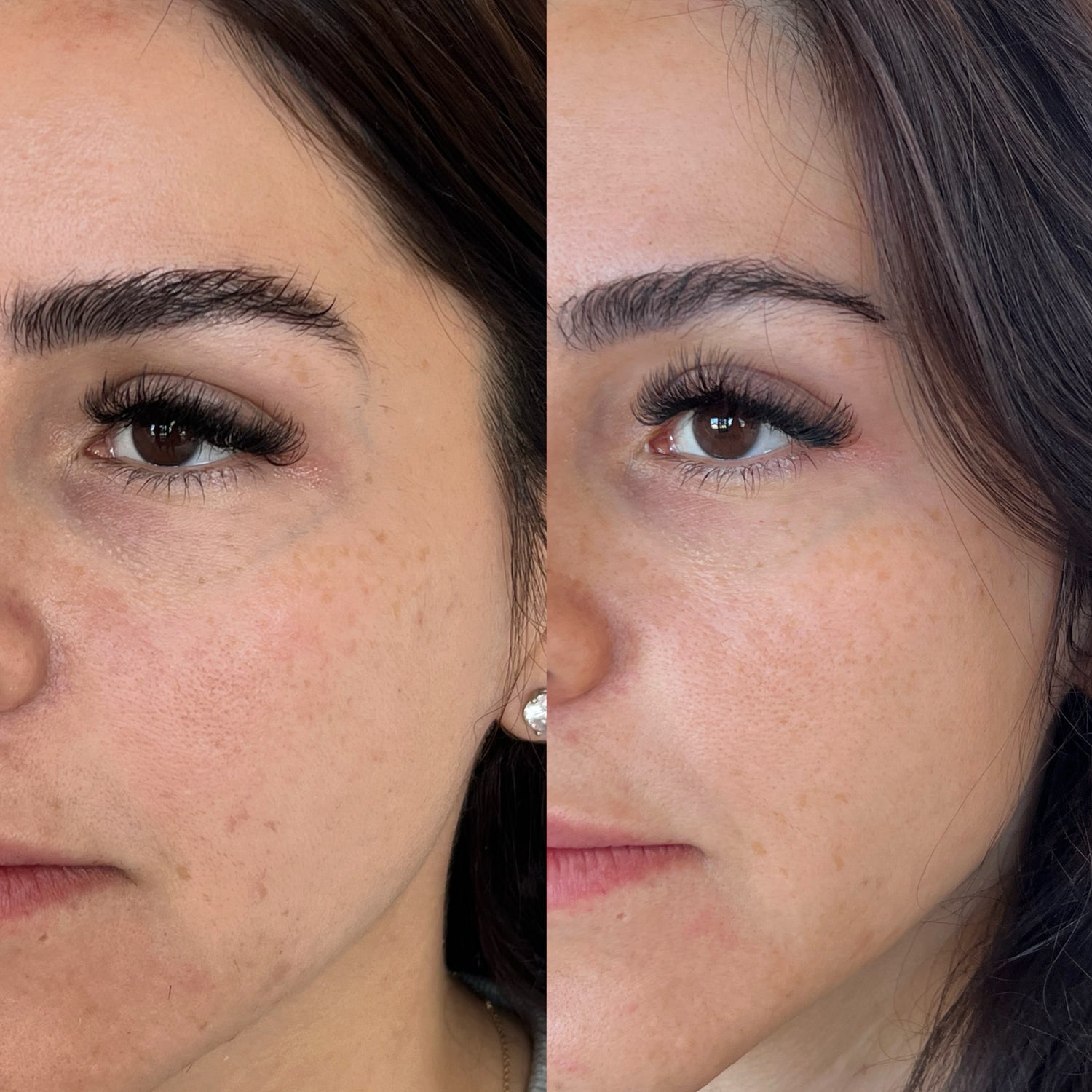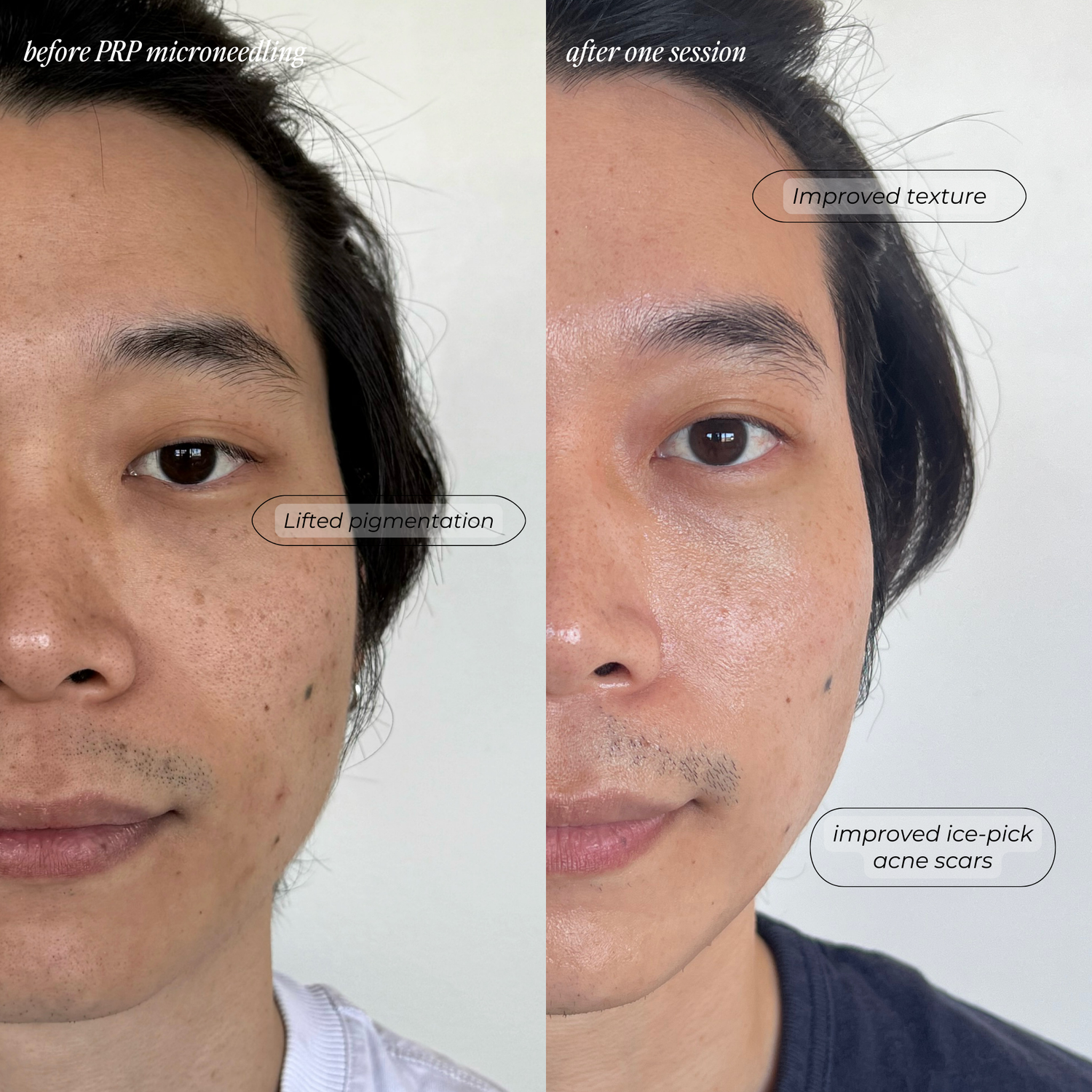
platelet-rich plasma
PRP, or Platelet-Rich Plasma, is a revolutionary microneedling treatment that harnesses the power of your own body to rejuvenate your skin to help you achieve a smoother, more youthful complexion.

How PRP works
A small amount of your blood is drawn and processed to create a concentration of platelets. Platelets are rich in growth factors, which play a vital role in healing and cell regeneration. The PRP is then applied to your skin and microneedled into the dermis. This process creates controlled micro-injuries that trigger your body's natural healing response, stimulating collagen and elastin production.

PRP offers a range of benefits:
- Reduced wrinkles and fine lines
- Improved skin texture and tone
- Minimized pores
- Faded scars and hyperpigmentation
- Enhanced overall skin health
FAQ
What can I expect during a PRP treatment?
A small amount of blood is drawn.
The blood is processed in a centrifuge to separate the PRP.
The PRP is injected into targeted areas of your skin using a fine needle.
The treatment typically takes about 30-60 minutes.
Does PRP hurt?
A topical anesthetic can be applied to numb the treatment area, minimizing discomfort.
Is there any downtime after PRP?
There is minimal downtime associated with PRP. You may experience some redness, swelling, or bruising at the injection sites, but this usually resolves within a day or two.
How many PRP treatments will I need?
The number of treatments needed will vary depending on your individual goals and skin condition. Typically, a series of 2-3 treatments spaced 4-6 weeks apart is recommended.
What are the side effects of PRP?
PRP is a very safe treatment since it uses your own blood. The most common side effects are mild and temporary, such as redness, swelling, and bruising at the injection sites.
Who is not a good candidate for PRP?
PRP may not be suitable for everyone, including pregnant or breastfeeding women, people with certain medical conditions, and those on blood-thinning medications. We will discuss your medical history during a consultation to determine if PRP is right for you.
